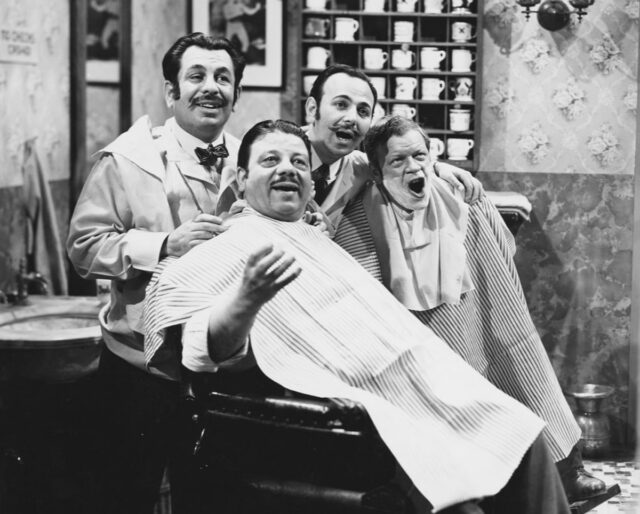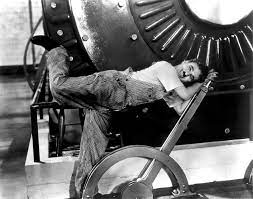
How to Improve Sight-Reading Skills
How to improve sight-reading skills An Introduction to Sight-Reading What exactly is sight-reading? Sight-reading is the ability to look at a sheet music chart and sing it for the first
Barbershop harmony is the most exact type of music because the three voices which accompany the lead in a Grade A quartet vary the tone level to give the right pitch on each tone. Believe it or not, those accompanying voices MUST vary the pitch of various tones depending upon their voice position in the chord. This may seem confusing to those who consider that a piano in perfect tune is an exact instrument. Actually four voices can produce much closer and more perfect harmony than four notes on a piano. That is one reason why we thrill to the effect of a perfectly blended quartet as we do to no other form of music.
What follows is based upon the assumption that readers have to some extent familiarized themselves with the “Mechanics of Barbershop Harmony” presented some years back in the Harmonizer. Take the last three words in the first phrase in the chorus of “Let Me Call You Sweetheart.” The sequence of chords on “love with you” is 11 o’clock major, 3 o’clock seventh and 2 o’clock seventh. The Lead has the same melody tone-LA-on all three words. The tenor sings FA-SaL-fl., the Baritone DO-di-DO and the Bass F A-MI-RE. It is surprising to discover that the Baritone, in order to get good blend on the third chord must drop the pitch of DO below the first one. This is the concept of relative pitch.
Some years ago when making the first “mechanical man” talk, the real reason for this variation developed in my mind. In this illustration, the BARITONE MUST DROP THE PITCH OF HIS SECOND DO ALMOST ONE QUARTER OF A TONE BELOW THE FIRST DO TO MAKE SATISFACTORY HARMONY.
Other harmony parts must also adjust their tones or relative pitch at times but usually not to such a great degree. Here, the Lead has established the level of the melody tone, and thru the harmony parts must line up with it. In Barbershop quartet singing, it is only the true ear of the Lead that keeps them from changing pitch as they progress from chord to chord.
Here is the arithmetic necessary to explain this example and achieve relative pitch: Suppose we as sign 400 cycles to the first Bass tone FA. Don’t worry about that word cycle as it just a measure of pitch like a POUND of butter or a DOZEN eggs. Likewise, the term frequency is just another way of saying the NUMBER of cycles, (A 400 cycle tone has a frequency of 400). A seventh chord based on 400 cycles consists of 400-500-600-700 (1 – 1 ¼ – 1 ½ – 1 ¾ times the root). The 400 cycle root is chosen here to simplify the arithmetic.
(11-T)
LOVE
FA’ = 800
LA = 500
DO’ = 600
FA = 400
(3-7)
WITH
SOL’ = 875
LA = 500
di’ = 625
MI = 375
(2-7)
YOU
fi’ = 822-2/3
LA = 500
DO’ = 583-1/3
RE = 333-1/3
The Baritone sings a 600 cycle tone on love and must drop to a 583-⅓ note on you, a difference of 16-⅔ cycles. This represents a lowering in pitch of 2.778 percent. An evenly divided scale of twelve half-tones has approximately a six (5.9463) percent between half-tones. So we have the proven fact that the Baritone, in this case, has to vary the pitch of a given tone .47 of a half-tone or almost one quarter tone to make “solid” harmony.
Obviously this getting a blend that is closer than possible on a piano demands a sharp ear. Without it, it is entirely possible for four trained voices, each interested primarily in getting his own note exactly as written (without “feeling” his way into the closer harmony blend) to be “just another quartet” not completely melted together. This might apply particularly to soloists thrown together into a foursome; while four untrained voices with instinctive sense of barbershop harmony would blend like cream.
These tone adjustments are necessary to make perfect ringing chords aka relative pitch or close harmony. As we sing our songs, we do not think in terms of frequencies nor do we need to. But it is necessary to listen to the other voices and adjust our tone to obtain the “ring.” The more we rehearse, the more accurate we become as we first strike the tone and the less time it takes to adjust to the correct value. The main point to realize is that our tones must vary slightly to line up with, not only the melody note, but with the tone’s position in the chord structure. Our Society champions win their coveted medallions only after months and months of concentrated work in smoothing out these tonal values.
Reagan, M. Relative Pitch, The Harmonizer, Volume 6, No. 3, February 1947, pages 26-27. Copyright by the Barbershop Harmony Society. Reprinted with permission. Note: minor adaptions made.
Click to read about The Basics of Barbershop Harmony or read about the Barbershop in Popular Culture which includes a discussion on the history and origins of the Barbershop style of a cappella music.

How to improve sight-reading skills An Introduction to Sight-Reading What exactly is sight-reading? Sight-reading is the ability to look at a sheet music chart and sing it for the first

Generally in most years, the SWD sponsors an annual Chorus and Quartet competition. The exception is the pandemic year we experienced due to Covid-19. There was no competition during the pandemic. The BHS recent resumed chorus competitions in 2022.

The Tidelanders excitedly sponsored our first singing competition. We promoted the contest to over 200 high schools in Harris and Fort Bend counties in Texas. We announced two winners (Men’s and Women’s) mid-April. We are looking forward to planning a bigger contest next year.

The Houston Tidelanders Chorus is pleased that we were able to perform for Clear Lake audiences once again! We’ve been performing in the Clear Lake area for about 25 years and it’s one of favorite shows.

“Smile” continues to be considered timeless. Meaning the message always seems to be relevant. As long as it continues to be popular, artists will continue to cover and interpret it’s meaning in order to continue to have it resonate with audiences. Modern artists like Michael Jackson have arranged and performed it.